Down to the river.
It is pitch black as I stumble out of my tent and join the stream of humanity resolutely making their way towards the river in the inky darkness. It was only 5 am, but already the streets were lined with vendors selling everything from packets of flowers to hot milky tea. The only light besides the occasional naked bulbs hanging from makeshifts stalls was the distant light of the full moon, illuminating the swell of people of all types and ages, some marching somberly ahead, others engaged in jovial banter, the sort of which has no place at this unearthly hour. There are housewives with cranky children and old men pulling their blankets ever tighter to keep out the biting November cold, some chanting others singing, lending an air of spirituality to the entire procession.
We are in Bihar at the Sonepur Mela and the morning of Kartik Purnima, the last of the important holy days in the Hindu calendar. On this day lakhs of pilgrims from far flung corners of India and also from across the mountains of Nepal, descend on this dusty and otherwise nondescript town 40 km north of Patna to take a soul cleansing dip in the chilly waters at the confluence of the Ganga and Gandak.
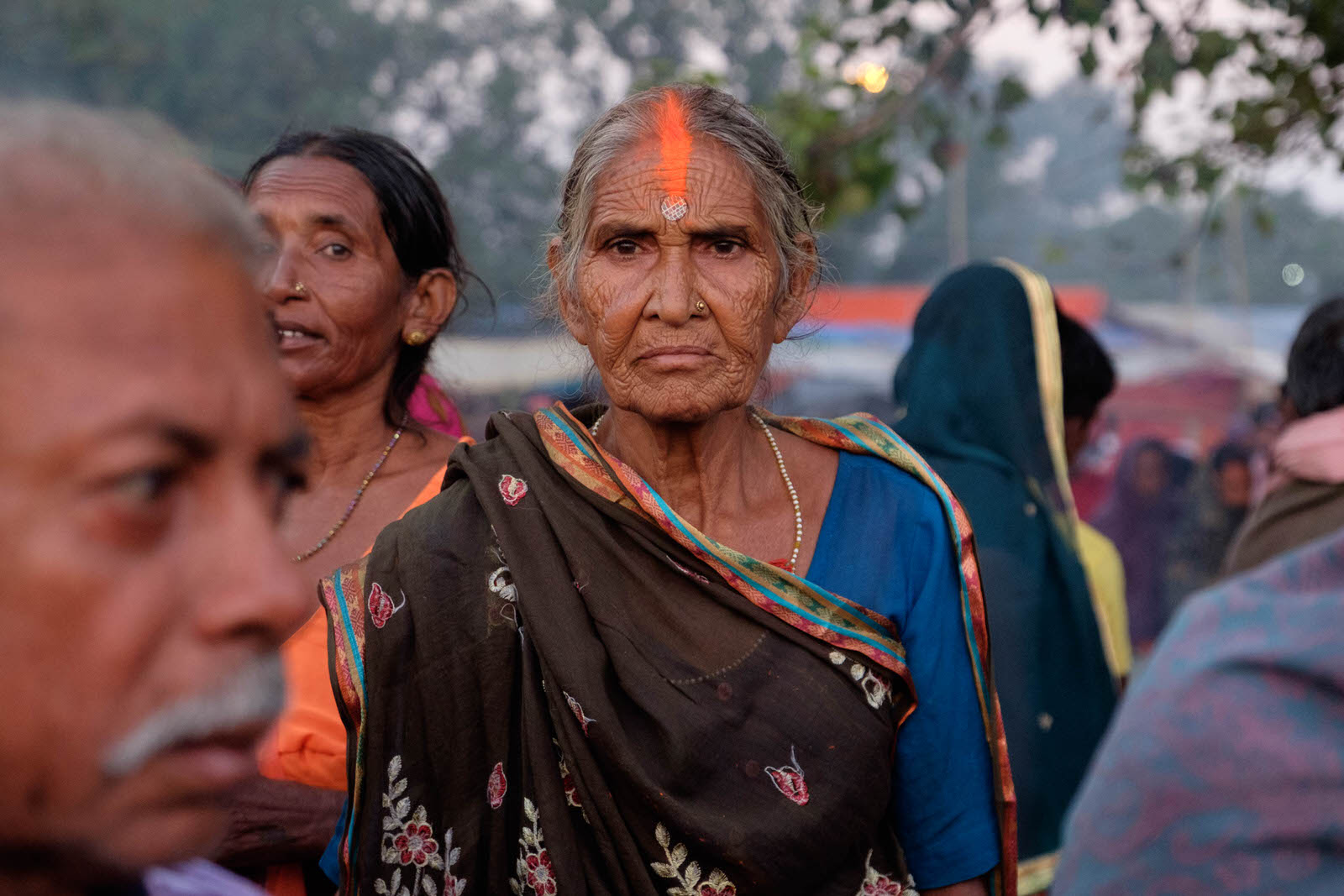
Kartik Purnima is particularly significant. It is considered to be the day Lord Vishnu took his first incarnation, Matsya, a giant fish, to rescue man from a great deluge and also the day when Shiva with a single arrow annihilated the three sons of demon Tarakasura, who had defeated the gods and captured the universe. Thus both Shiva and Vishnu are revered on this day, in temples, rivers and festivals across the country.
We snake past the famous Hariharnath Temple where the line of devotees waiting to get in seems never ending and make our way towards the river. As we get closer the crush gets more intense as people squeeze through the narrow bamboo barricades leading to the bathing ghat. The faint strains of a loudspeaker get clearer, singing praises of the gods and the local government, for making such fine arrangements on this holy day whilst simultaneously urging people to move along. With one final push we arrive at Kali Ghat as the first faint rays of the sun pierce the fine morning mist, revealing a sight to behold.
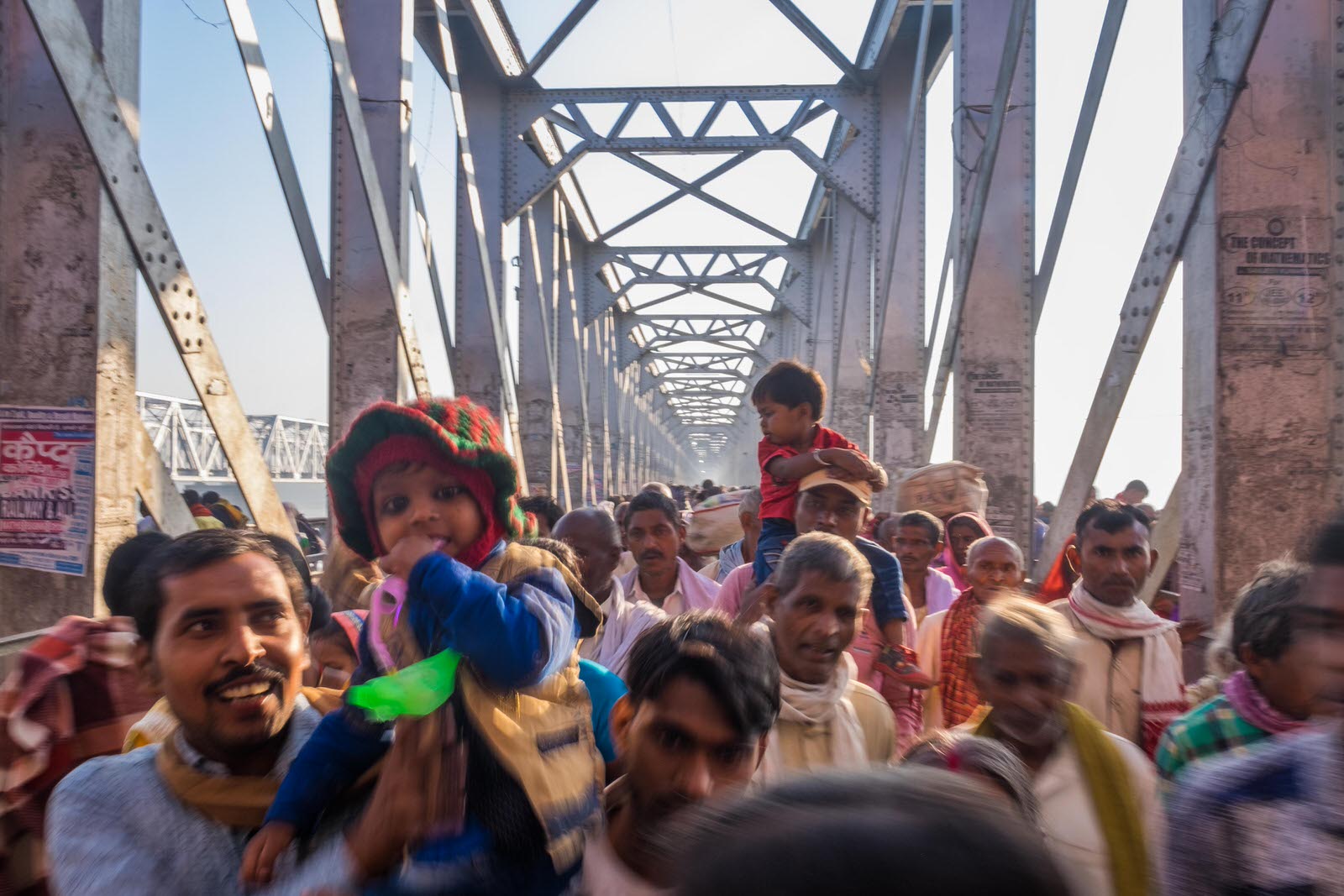
There are people everywhere. Thousands occupy the narrow ghat, which in sections is no more than a slippery mud bank sloping towards the river. As the crowd heaves, people jostle, slip and slide down to the river where a myriad of activity is underway. Men, chest deep in freezing water dunk themselves vigorously, as if washing off a lifetime of assorted sin. Women, sporting bright orange streaks of ‘sindoor’ from the tip of their nose all the way through their hairline, light lamps and stick incense onto the thick clay banks of the Gandhak whilst praying to the river and sun gods who have combined to offer quite the spectacle. The slow moving river shimmers with a warm glow of the morning sun complementing the colour of the sindoor. Despite the crowd and chaos, down by the river amongst the chanting, lighting of lamps and incense, there is a certain calm that descends, something I always feel when in the midst of raw belief and spirituality.
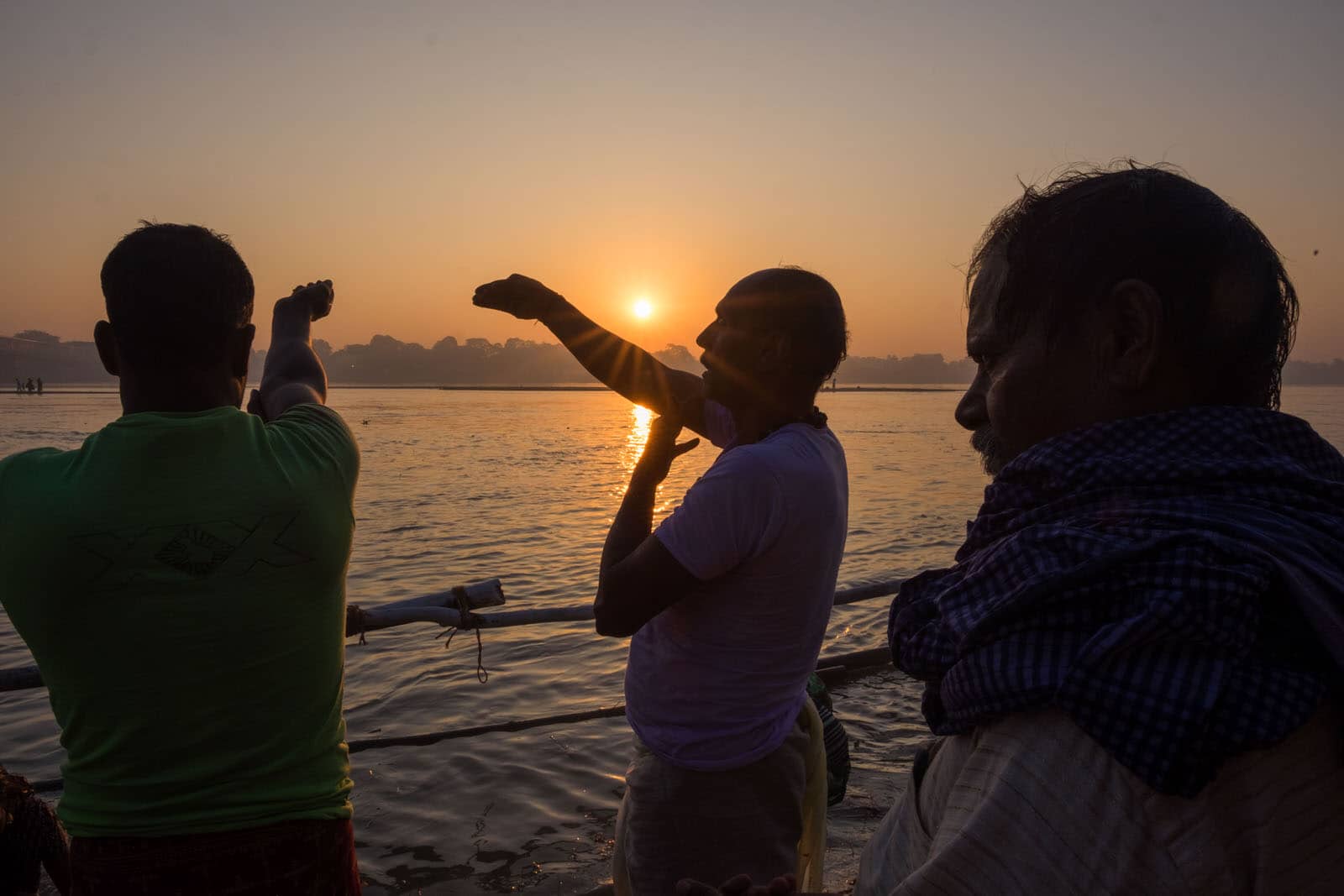
Of course along with the spiritual, places like Sonepur always throw up a healthy dose of the strange.
I see a man over a cowering boy, brandishing a rather large pair of scissors, as a garishly made up transvestite sings praises of the divinity of the gods. Her voice is jarring but everyone around seems pleased as punch. Except the child.
What’s happening?
‘Main Thakur hoon’ replies scissor hands as I nod vigorously, professing false comprehension.
What’s happening?
The boy, it seems, is going through a type of mundan, a ritualistic cutting of hair. The hair will then be tied up in an old sari along with some notes, coins, flowers and prasad and floated down the river; while the transvestite continues to howl, apparently a key part of the ceremony. This will ensure that the boy grows up happy and healthy, with a long prosperous life and a good wife!
I sit for a minute, contemplating this thought and wonder if my parents ever threw my hair into a river at some point and how it may have affected my life.
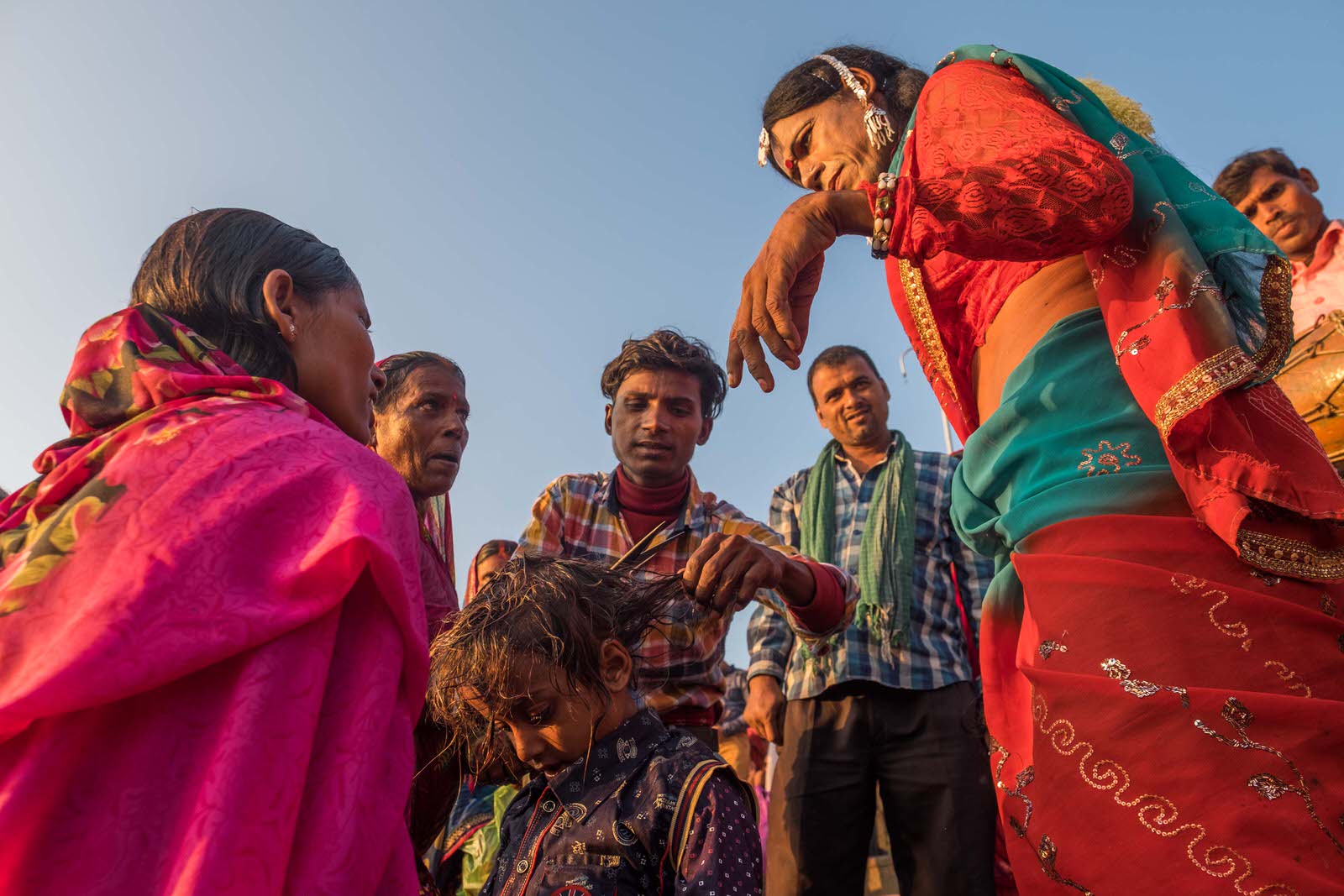
Kahanh Se Ho?
I am rudely awoken from my moment of contemplation to see a pair of Bihar’s finest quizzically looking up and down my pasty, hairy, exposed legs. I toy with the idea of giving myself an exotic identity, before thinking better of it.
Bombay Se, I venture.
They grin, then frown, pleased that I understand them, but perhaps a tad disappointed that I am not the foreigner they expected. I tell them I am here to see and photograph the rituals and ask the how many pilgrims are expected. They look at each other and shrug, pointing at the ghats around, already a swirl of colour and activity.
One of the cops then points further up the ghat, Wahan tantrik hai, dekh lo he offers nonchalantly, tiring of the conversation.
Tantriks? I had heard of them: spell casters and potion makers who can dispose of an irksome evil spirit or help you make the acquaintance of one, depending on which side their bread is buttered. Tantriks are as old as faith itself and whilst most have died out in an age where the internet offers all answers, some have survived in pockets. The tantiks that find themselves at Sonepur on Kartik Purnima come across the border from Nepal and tribal regions of Bihar and Jharkhand.
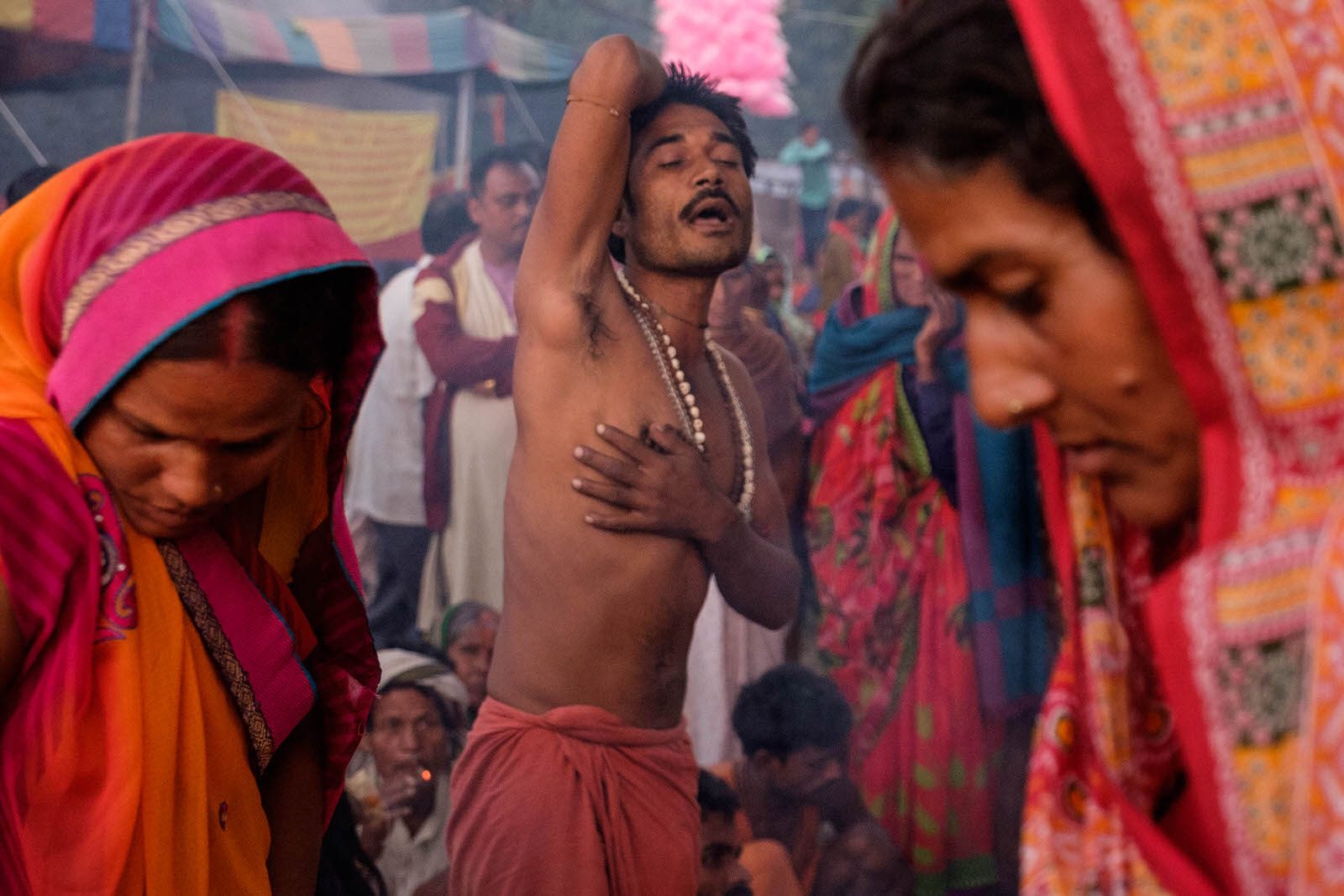
I am intrigued.
I make my way to the area indicated by the kind policeman and stumble upon a most unreal scene. In a circle amidst a small fire and several lamps sit three women shaking and chanting in an indecipherable tongue to a steady drumbeat. Of course seeing as, I speak neither Bihari and nor tribal tongues this is hardly surprising but nonetheless it adds to my excitement. As I watch one of the women rises up brandishing a stick and sways as if in a trace. The drummer ups the tempo, leading to a directly proportionate increase in urgency of the swaying. The Tantrik, until now seated silently, rises, muttering incantations and himself begins to pivot at a dizzying speed. The mood is reaching a fever pitch when suddenly as if a plug has been pulled, it stops. The woman sits by the fire again, eyes closed still swaying gently, the tantrik still on his feet locks eyes with me briefly. I take this as my cue to exit.
Ghoda Bazaar
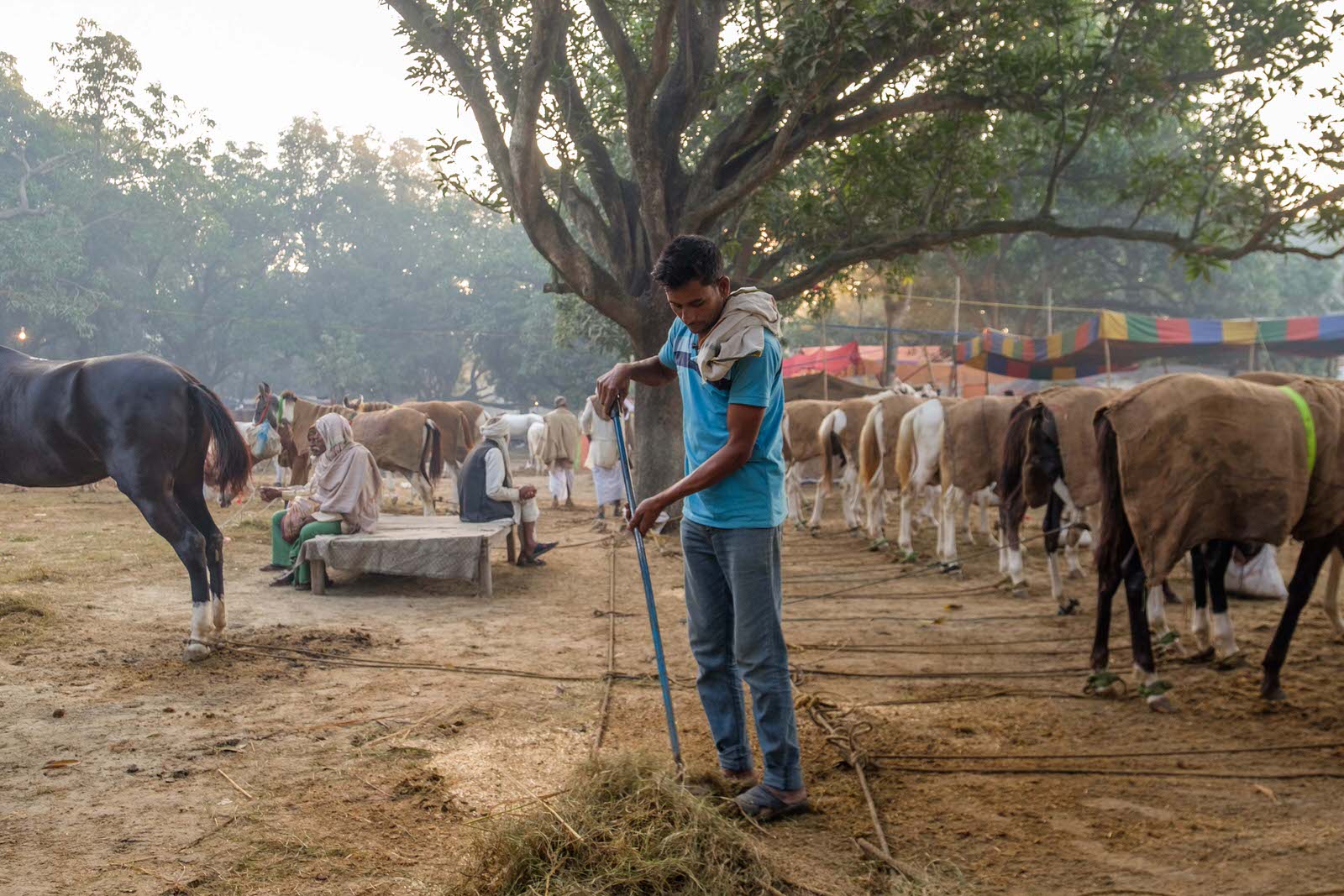
With the holy dip out of the way, the focus at Sonepur turns to the main event. The cattle fair! The Sonepur cattle fair has an ancient heritage that dates back to the time of the Mauryan Empire or Aurangzeb, depending on who’s telling the story. It is said that the fair boasted of the best horses that came all the way from Central Asia to replenish the Emperor’s armies. However, it is not the horses that are the star of the show at Sonepur, it is the elephants. The Mela at Sonepur and the elephants find their roots in the Gajendhra Moksha, a tale from one of the 18 great Hindu texts. Gajendhra, the King of Elephants was trying to cross the Gandak at Sonepur when a Crocodile, Gandharva grabbed his foot. The battle between elephant and crocodile raged for days, and the elephant unable to free himself appeals to Lord Vishnu for help. Long story short, Lord Vishnu, as Hariharnath, slays the crocodile and frees Gajendhra, resulting in the Sonepur Mela commencing with the traditional elephant bath on Kartik Purnima.

Until now that is.
While in the 1980s hundreds of elephants were found at Sonepur, the number whittled down to 13 in 2016. In 2017 I can see only a single elephant calf at the Mela.
I ask everyone about the famous Sonepur Hathi Bazaar, but there are none. Traditionally elephants would come from all over Bihar and UP and as far as Assam, bought by an assortment of loggers, temples and the occasional enthusiast. With regulations preventing the sale and gifting of elephants, owners have increasingly stayed away. The one elephant at Sonepur doesn’t stay long, on the second evening of the fair she’s nowhere to be seen.
There are however, horses. By the truckloads. An epidemic scare at the 2017 Pushkar Mela in Rajasthan meant that most horses owners never got to enter the fair, and are now here at Sonepur hoping for a turn of fortune. The Ghoda Bazaar has thousands of horses, row upon neatly arranged row stretch as far as the eye can see. The odour of fodder and dung hangs in the air as everywhere conversations and deals are struck between potential buyers and sellers. The larger traders have come with upwards of 20 horses and have their own tents. Smaller traders come with six to eight horses and are happy to sell half and be on their way.
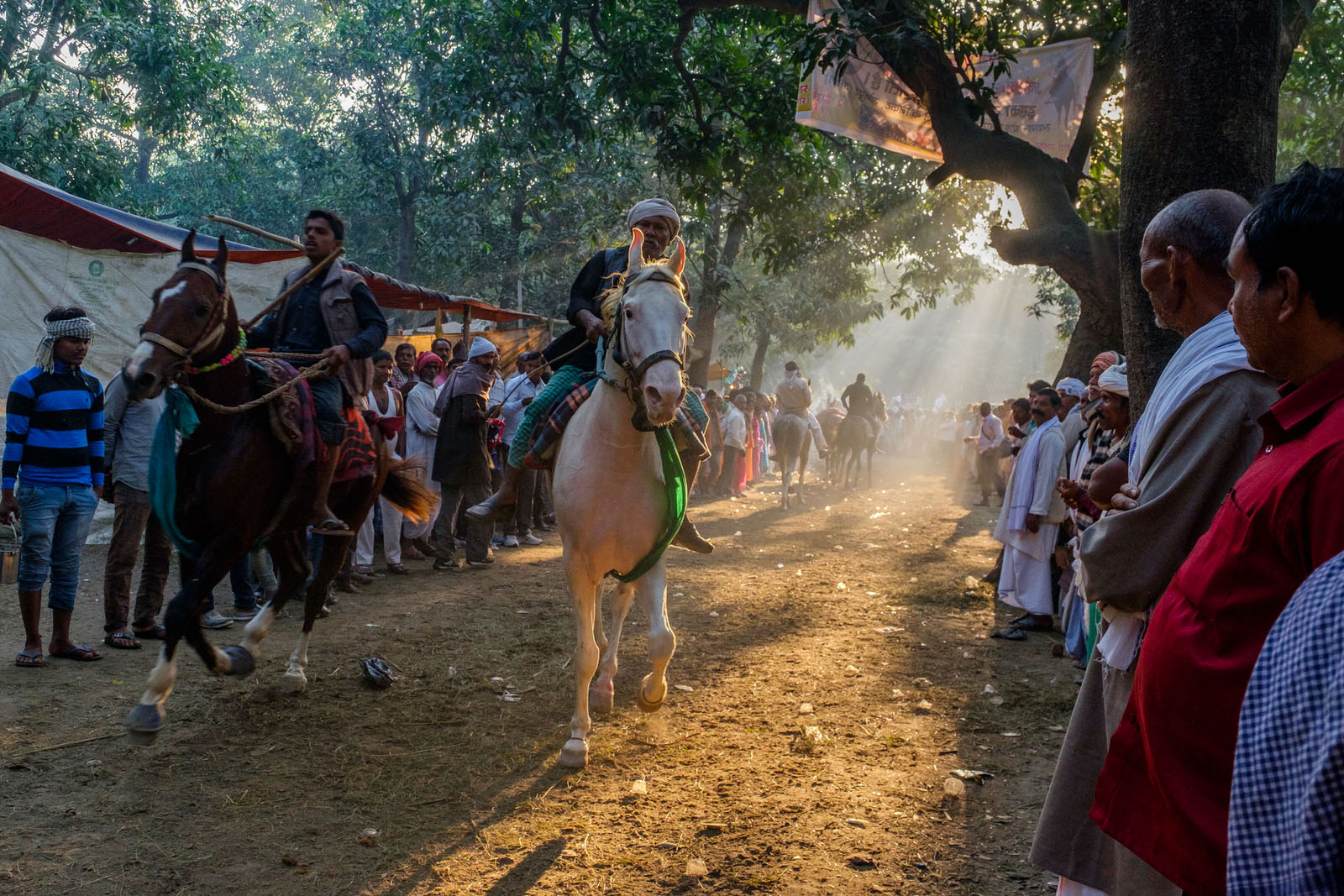
Every morning and evening owners ride their horses up and down a section of the market hooting and kicking up dust as onlookers eagerly crowd around to watch the histrionics, many narrowly avoiding getting kicked by the galloping steeds. It is here that the best breeds are shown off and a potential customer could also get a feel of the animal.
As we watch horse after horse tear down the narrow pathway, I strike up a conversation with Ramlal, a trader from Uttar Pradesh. I want to understand how the market operates. He is has come to Sonepur for the first time from Mathura, Pushkar didn’t have the usual allure he tells me. I ask him much a horse costs and Ramlal gives me a crash course on what to look for when I buy my first horse. Horses are valued on everything from size and sheen to gait and features that are considered auspicious. Whereas white horses are considered to be the most exclusive, the Bihari ones have the best trot, but as much as I try, I can’t get a number out of Ramlal. The price at which deals are done remain a closely guarded secret between buyer and seller who engage in an age old system of negotiation, hands clutched together tightly under the cover of a dupatta. Fingers are then squeezed, with the number of fingers indicating a price.
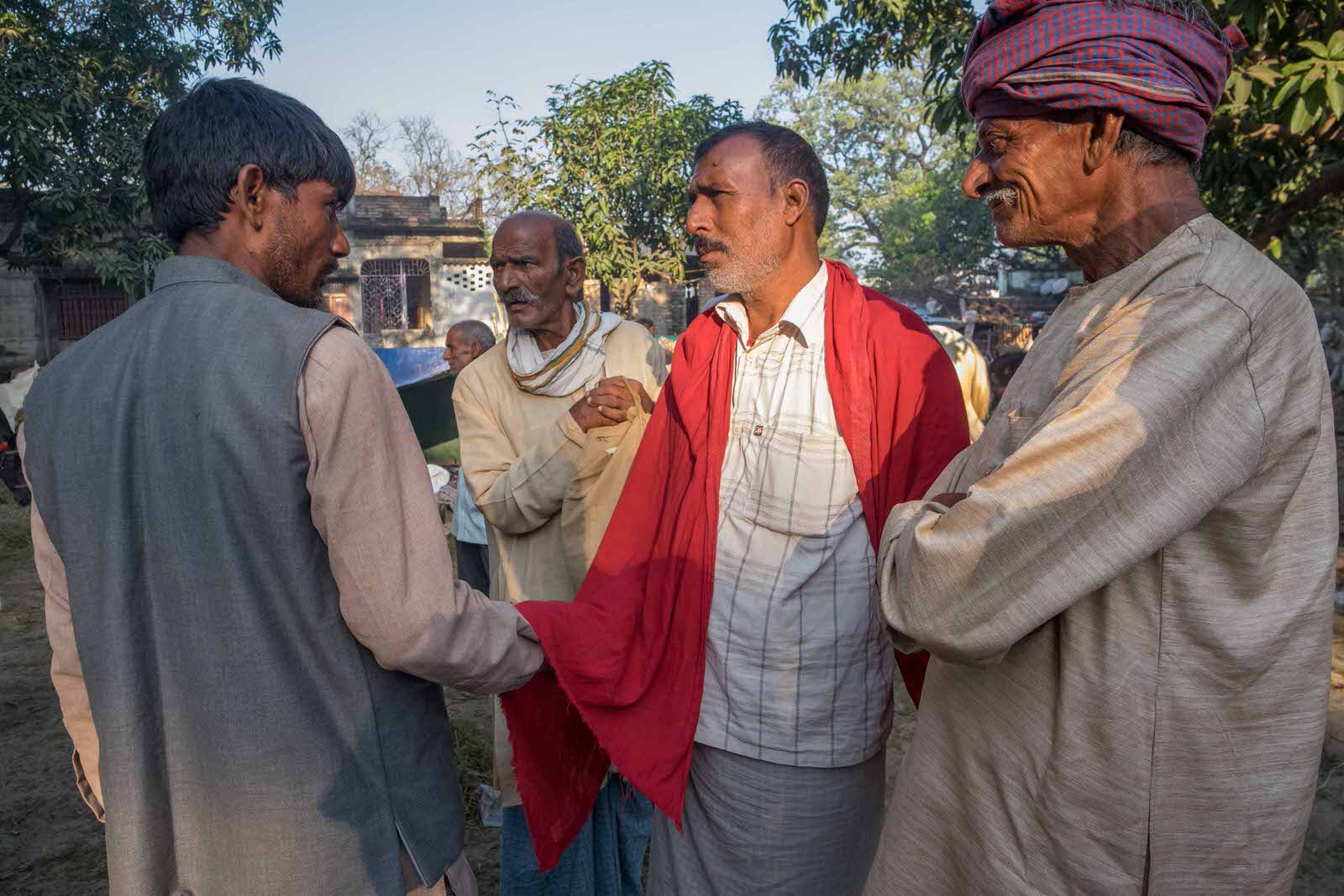
What’s a Mela without a Mela.
Of course the Sonepur Mela is at its heart a rural fete, which attracts lakhs, and once the holy dipping and animal trading is out of the way everyone settles in for some fun. It is here in Sonepur and other tiny fairs that you can get a true window into rural India. Sonepur has everything from stalls selling rings that promise a cure for bad dreams or a failing business to the stalls selling oily jalebis and fried river fish. But everyone loves a good show! It is only here in Sonepur that you can find what the Biharis slyly refer to as theatre; a bunch of women in minimal clothing swaying on stage to popular local music. Tempting as this seemed, I gave this is a skip, the mela was noisy enough already without being assaulted by ear piercing Bhojpuri songs. Next door is the village magician, the famous Kumar Jadugar, a four time Sonepur veteran whose popularity has survived television, the internet and competes in noise making with the ‘theatre’ next door. I chalk the magic show down for later but what I’m really there to see is the Maut ka Kua.

Dekho Maut ke sath khel! Keval 20 rupaiya, 20 rupaiya 20 rupaiya! screeches the boy on the microphone as I stand below the 50-foot-high well made of planks of wood bolted together. I can barely contain my excitement. This is the dramatically named Maut ka Kua or the Well of Death where a few extremely skilled lunatics will mount motorcycles and ancient Maruti 800s and tear around inside the rickety well. The performers are already revving their bikes inside to coincide with the feverish exaltations of the boy on the microphone. I pay my 20 rupees and bound up the stairs, settling at a good spot to take in the action. The stands slowly fill up until the onlookers are two or three rows deep, and the ‘show’ begins. A motorcyclist with a puny red helmet, worn it seems more for effect than anything else kicks off the proceedings. With minimum fuss he revs up his battered Yamaha RX100 and starts encircling the well and before you know it, he and his magic machine are up there making rounds on the inner wall of the well higher and higher, parallel to the ground! He is soon joined by a second and then third motorcyclist, all zipping around, the defining roar of their un-silenced vehicles drowning out the sound of the crowd and din of the mela outside.
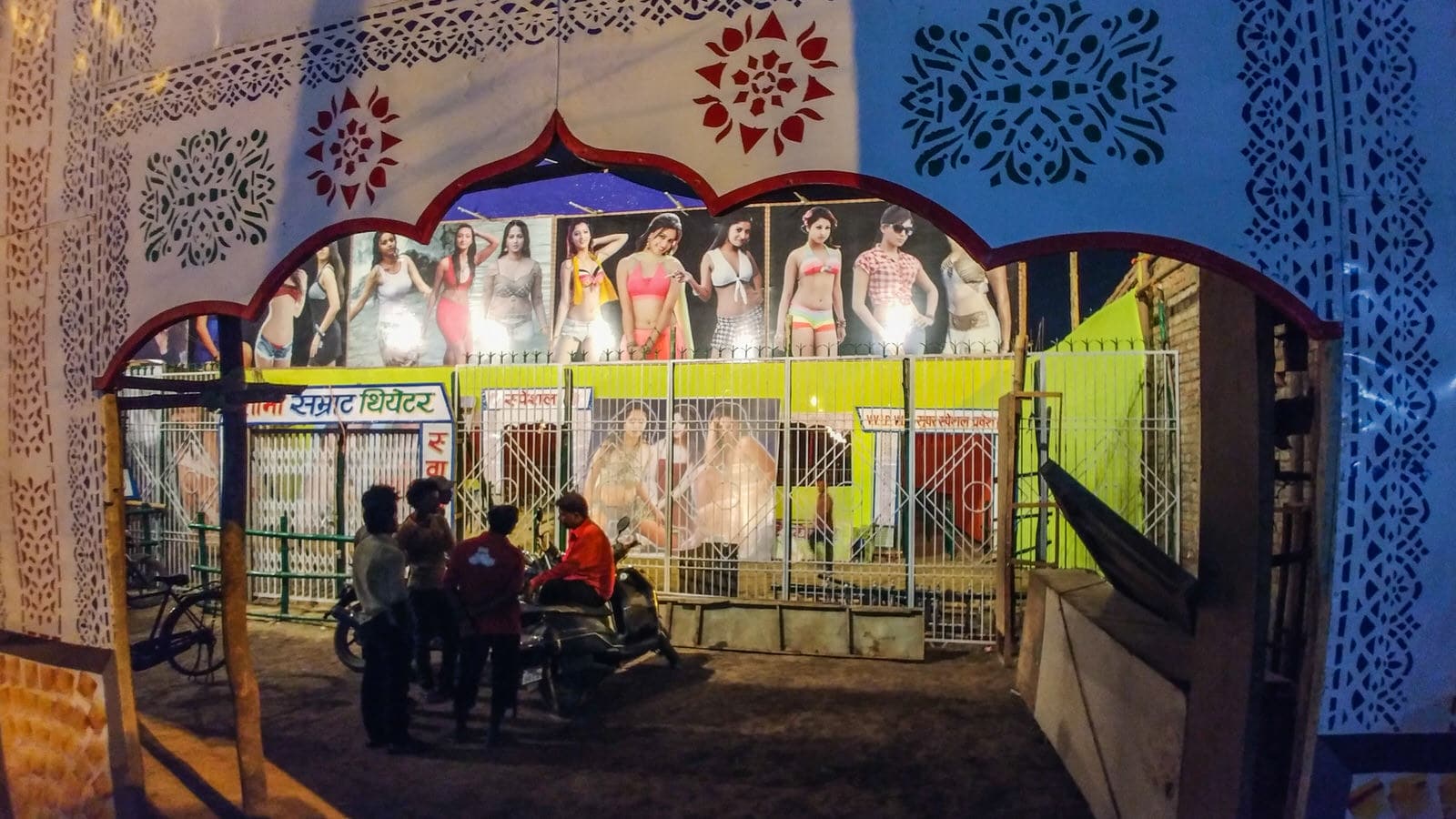
As if this wasn’t enough the motorcyclist soon start performing ‘tricks’: sitting sideways on their seats, standing up, and at one point all three riders pull alongside linking arms in an astounding display of coordinated daredevilry. Just when it seems like it can’t get any crazier, the bikers are joined by the old Marutis. The Maruti 800s are perfect for the Maut ka Kua, the only car with the weight to power ratio to stay up on the wall. Now the well of death really begins to shake as the 2 cars and 3 bikes try to outdo each other. The car riders are soon sitting out of the car windows arms folded nonchalantly as the bikes come up to the edge of the well perilously close to the crowd, snatching notes out of the hands of cheering onlookers. Smaller notes are studiously ignored. It’s a surreal sight, five individual cars and bikes that have seen better days, jointly cocking a snook at Newton, in a rural fair in Bihar. And then as suddenly as it started, the gravity defying act reaches its climax, the performers rev down slowly and the audience starts milling out of the well. As I walk away to get some tea, the boy takes up his microphone, a line has formed by the gate; it’s just another day at Sonepur.
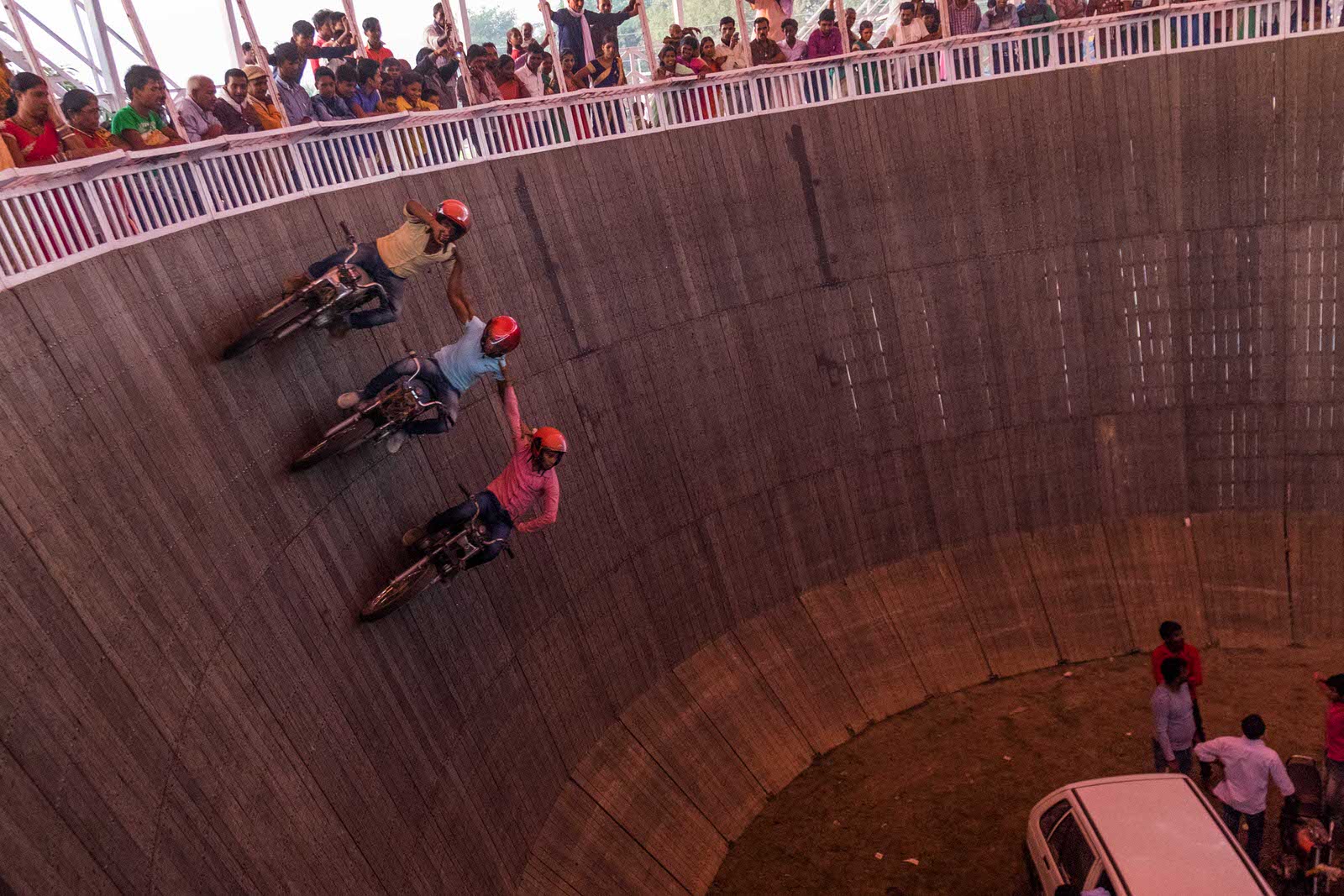
Some Useful Information
About the Mela
The Sonepur Mela is an annual, month long festival which commences on the day of Kartik Purnima by the Hindu Lunar Calendar which usually falls in the month of November. It is considered the largest cattle fair in Asia and once boasted Elephants, Horses, Birds, buffalos, goats, dogs, rabbits and other assorted animals. The Mela is said to attract upwards of 25000 – 30000 visitors a day with the number rising significantly on weekends. Besides the cattle fair and the stalls at the Mela, Bihar Tourism also hosts daily cultural programs including classical dance, music and even westling!
How to get there: The annual mela takes place at Sonepur, 40 Kms from Patna, which is well connected to all major Indian cities by air and rail . The easiest way to get to the Mela is to catch a taxi from Patna which costs approx INR 1200.
Where to Stay: Sonepur itself does not have too many stay options but Bihar Tourism runs a Tourist Village for the duration of the Mela with comfortable Swiss tents with attached bathrooms. The Tents cost INR 6000 + Taxes for the first week of the Mela with rates dropping in subsequent weeks.
Where to Eat: The Tourist village hosts a restaurant serving basic Indian food but don’t miss snacking at the various stall set up at the Mela where you will get everything from Bihar’s famous Litti Chokha to Masala boiled eggs and freshly fried river fish.
A version of this story first appeared in the January 2018 Issue of Discover India magazine.
very nice narration Hosher. Keep it up. Makes for super interesting read.
Thanks Lakshmi! It’s places like this that give you a glimpse into the real India!